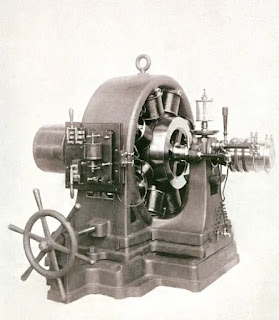Nikola Tesla is often referred to as the “forgotten genius” of the 20th century. This is because many of his inventions were overshadowed by those of his contemporary, Thomas Edison. But there’s no denying that Tesla was a genius in his own right—a fact that is only further solidified by his many incredible inventions. In this blog post, we will explore the 5 inventions of Nikola Tesla that have shaped the world as we know it today.
Nikola Tesla Inventions 1:The Tesla Coil
In the late 1800s, Nikola Tesla was hard at work on a variety of inventions that would change the world. One of his most famous creations is the Tesla coil, a device that uses electricity to create high-voltage sparks.
The Tesla coil is basically a giant spark plug. It consists of two coils of wire, one inside the other. When electricity is applied to the inner coil, it creates a magnetic field that induces a current in the outer coil. This current produces sparks that can be used for everything from powering light bulbs to producing X-rays.
The Tesla coil was just one of many inventions created by this visionary scientist. Others include the AC motor, radio, and fluorescent lighting. Each of these inventions has had a major impact on our world and our daily lives.
Nikola Tesla Inventions 2:The Radio
In the late 1800s, Nikola Tesla was one of the most famous inventors in the world. He had a vision for the future that included wireless communication and electricity. He invented the radio, which was a major breakthrough in communication technology. Tesla's radio was able to transmit signals across long distances without the need for wires. This allowed people to communicate with each other without being physically close to each other. Tesla's radio was also able to pick up weak signals, which made it possible to communicate with people who were far away.
Nikola Tesla Inventions 3:AC Current
AC current is an electric current that reverses direction periodically. It is the form of current most commonly used in electrical power systems, and is the alternating current (AC) voltage that drives all modern electronic devices.
Nikola Tesla was the first to develop and patent AC current, and his work laid the foundation for the development of the modern electrical grid. Tesla's AC system was much more efficient than the DC system developed by Thomas Edison, and it quickly became the standard for electrical power systems around the world.
Today, AC current is generated by power plants and transmitted over long distances through high-voltage transmission lines. It is then distributed to homes and businesses through lower-voltage distribution lines. Within buildings, AC current powers everything from lights and appliances to computers and TVs.
Nikola Tesla Inventions 4:The Electric Motor
The electric motor is one of the most important inventions of Nikola Tesla. It is an alternating current (AC) motor that uses electromagnetism to create mechanical rotation. The electric motor was first used in the early 1800s for powering cranes and other machinery, but it was not until Tesla developed his AC motor in 1887 that it became a viable option for powering vehicles and other devices.
Tesla's AC motor was more efficient than the existing DC motors of the time, and could be scaled to any size. This made it ideal for use in electric vehicles, which were becoming increasingly popular in the early 1900s. Tesla's motors were used in a number of early electric cars, including the Cadillac Model B and the Detroit Electric Model A.
Today, electric motors are used in a wide variety of applications, from small household appliances to large industrial machines. They are an essential part of our modern world, and we have Nikola Tesla to thank for their existence.
Nikola Tesla Inventions 5:X-Rays
Nikola Tesla is best known for his development of alternating current (AC) electricity, but he also made groundbreaking discoveries in the fields of radio and X-rays. In 1895, Tesla became the first person to successfully transmit radio waves across a room, and in 1896 he received a patent for his "Tesla coil," which is still used in radio technology today.
In 1899, Tesla began experimenting with X-rays, and he soon developed a new type of vacuum tube that was more efficient at producing X-rays than any other device that had been invented up to that time. Tesla's X-ray studies led him to discover that high-frequency electricity could be used to heat body tissues without causing damage to the skin, a discovery that paved the way for the development of modern medical imaging devices such as MRI machines.
Nikola Tesla's impact on the world
Nikola Tesla was an Yugoslavian-American inventor, electrical engineer, mechanical engineer, and futurist who is best known for his contributions to the design of the modern alternating current (AC) electricity supply system.Tesla's patents and theoretical work formed the basis of modern alternating current (AC) electrical power systems, including the polyphase system of electrical distribution and the AC motor. This work helped usher in the Second Industrial Revolution. His design for a rotating magnetic field induction motor was widely used throughout industry and is still the standard today. In 1887, he developed the Tesla coil, which is an air-core transformer that produces high-voltage, low-current, high-frequency AC power. The Tesla coil is used in radio technology and in electronic equipment such as televisions and stereos.
In 1891, Nikola Tesla started experimenting with high frequency currents. He found that by using a Spark Gap to create sparks, he could generate radio waves. He created a radio transmitter and receiver that were capable of transmitting signals over long distances. In 1897, he sent a wireless signal across Atlantic City from his laboratory in New York City. This was the first demonstration of wireless transmission of power.
Nikola Tesla also made important contributions to electromechanical engineering and chemical engineering. He invented the bladeless turbine engine and developed techniques for hydroelectric power generation. He also discovered the rotation of the Earth's magnetic field, which led to his development of the Tesla compass.
Conclusion
Nikola Tesla was one of the most brilliant inventors of his time, and his contributions to science and technology are still felt today. Though he may be forgotten by many, his inventions have had a lasting impact on the world. From alternating current to wireless energy transmission, Tesla's inventions have shaped the modern world as we know it.









0 Comments
I love to read your comments. Please comments